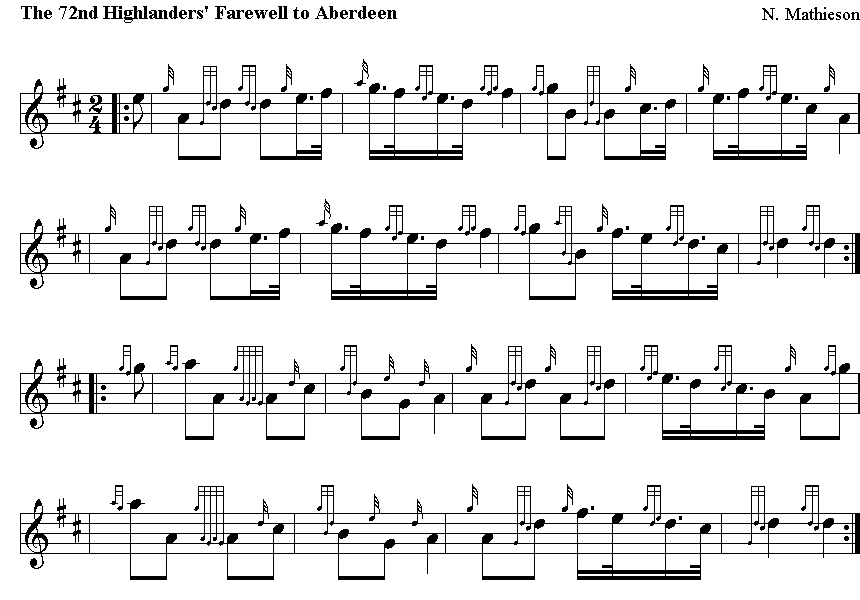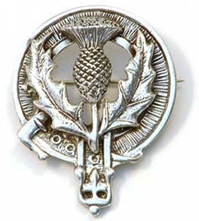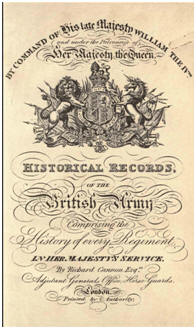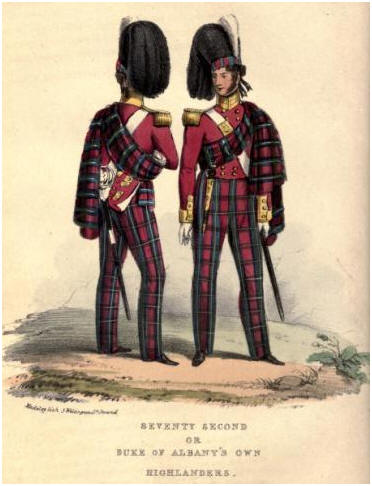William, fifth Earl of
Seaforth, having engaged
in the rebellion of
1715, was afterwards
included in the acts of
attainder, and forfeited
his title and estate.
His eldest son, however,
became a zealous
advocate for the
Protestant succession,
and supported the
government during the
rebellion in 1745; his
grandson, Kenneth
Mackenzie, was permitted
to re-purchase the
estate from the Crown,
and was created an Irish
peer, in 1 766, by the
title of Baron Ardeloe,
in the county of Wicklow,
and Ariscount Fortrose,
in Scotland, and in
1771, he was advanced to
the dignity of Earl of
Seaforth, which had been
long enjoyed by his
ancestors.
The American war
commenced in 1775, and
the Earl of Seaforth, in
gratitude for the favors
he had received, made an
offer to His Majesty, to
raise a regiment of foot
on his estate, which, in
former times, had been
able to furnish a
thousand men in arms.
This offer was accepted
in December, 1777; the
Earl received a letter
of service to raise a
regiment of foot, of
which he was appointed
Lieut.- Colonel
Commandant, and in
January, 1778. The
establishment was to
consist of fifty
sergeants, two pipers,
twenty drummer and
fifers, and a thousand
and ten rank and file.
The men were principally
raised from the clan of
“Caber
Feidh”
as the Mackenzies were
called from the stag’s
horns on the armorial
bearings of Seaforth.
Five hundred men were
from the Earl of
Seaforth’s own estates,
and about four hundred
from the estates of the
Mackenzies of Scatwell,
Kilcoy, Applecross, and
Redcastle, all of whom
had sons or brothers
holding commissions in
the regiment: the
officers from the
lowlands brought upwards
of two hundred, of who
seventy-four were
English and Irish. The
clan Macrae had long
been faithful followers
of the Seaforth family,
and on this occasion the
name was so general in
the regiment, that it
was frequently
designated the regiment
of “the Macraes.”
On the 15th of May 1778, the Earl of Seaforth’s regiment assembled at Elgin, in Moray, amounting to one thousand and forty-one rank and file; it was inspected by Major-general Robert Sken, adjutant general in North Britain, and the men were found so remarkably effective and fit for His Majesty’s service, that nearly everyone was accepted: the corps was placed on the establishment of the regular army under the designation of “Seaforth’s Highlanders;” the supernumerary men were formed into a recruiting company, and the regiment received orders to march southward, for the purpose of embarking for the East Indies. It soon afterwards obtained the numerical title of the “Seventy-Eighth Regiment."




